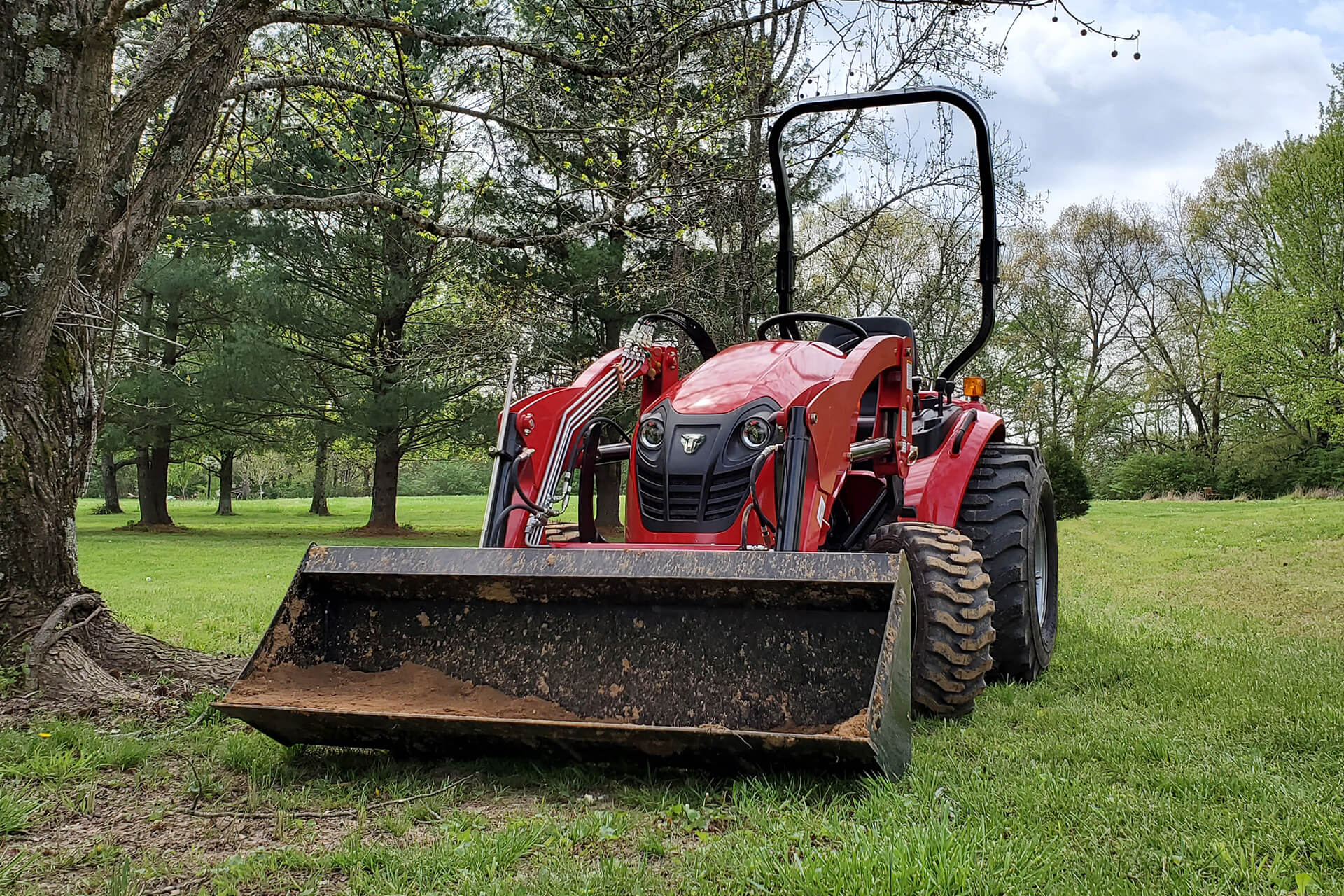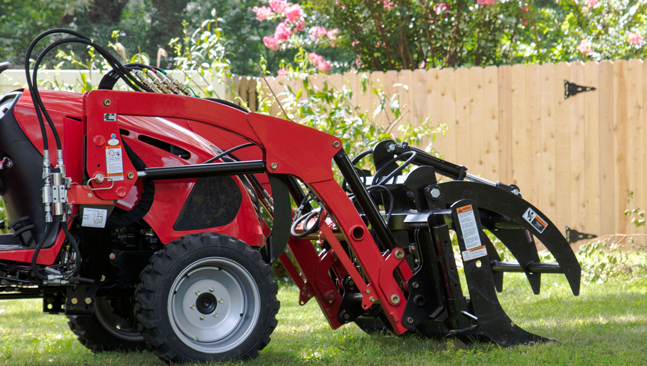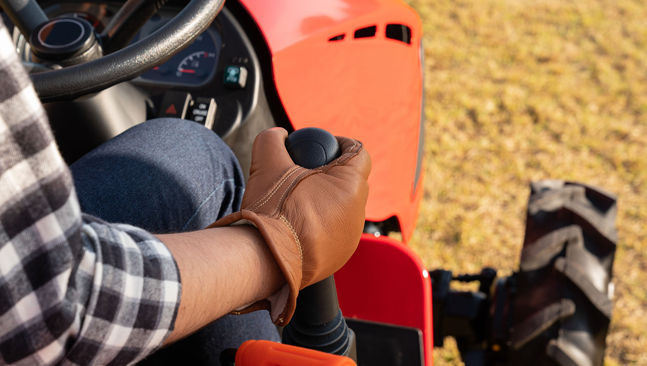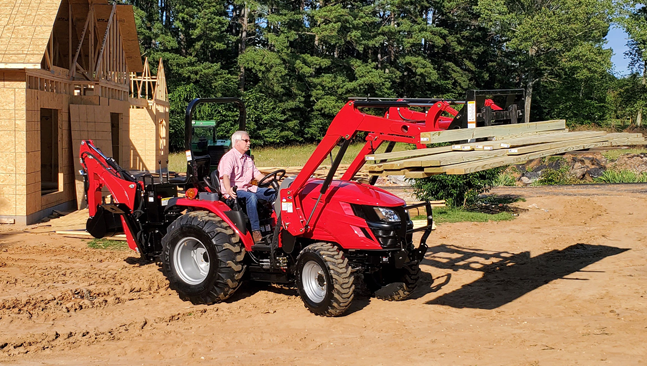
The basics of a front-end loader
Front-end loaders are manufactured for use on most tractors, regardless of their horsepower. Typically a front-end loader is comprised of two key components: lift arms and attachments such as buckets, bale spear or pitchfork.
The lift arms consist of hydraulics that provide the lift capability and operate attachments. Smaller loaders weighing less than 1 ton offer greater maneuverability in tight spaces while, their larger counterparts can lift greater loads. In-cabin controls and the options of self leveling loaders allow operators to conveniently orientate the loader while moving material.
TYM loaders come standard with buckets with volumes between 0.15~0.5㎡, and can support claw-shaped buckets, flat blades, forks, or tines.


Assembly and disassembly
It’s recommended to use the help of a professional technician to attach your front-end loader. However, if you're looking to assemble or disassemble the front-end loader yourself, it is important to review the instructions of your specific model so that steps are followed correctly.
Find a copy of your front-end loader model instructions here or speak with your dealership directly for support.
Depending on the model of your loader, assembly types may include a cross bar, grill guard, loader mounting frame, loader valve and hydraulic hose connection, and bucket horizontal gauge assembly.
If the loader is not being used for a long time, it is recommended to remove it to prevent excessive fuel consumption and to eliminate the risk of the tractor tipping or rolling over. Your dealer can advise on the best process for your needs.

Safety precautions
- Operating the loader will shift the center of gravity for your tractor due to its weight. Take all precautions to avoid the tractor and attachment from tipping or falling over.
- Loaders are typically meant for close range use. For safety and efficiency, make sure the working radius is no more than 20 meters.
- Remember that excessive heavy duty work may cause structural damage and shorten the life of the front-end loader, or even cause hydraulic failure.
- Loaders are not suitable for heavy-duty snow removal. Use a grader with a shock absorber to avoid bending the loader or damaging the tractor.
- Working on sloping surfaces should be avoided. Driving on an incline with an object in the loader is more dangerous.
- Do not operate the loader while driving as it is dangerous. Lower the loader arm and maintain low speeds while driving.
- When driving, avoid bumpy terrain, but if necessary in a hilly area, go straight down or up.
- Items must be loaded in a place that minimizes the risk of overturning the tractor or loader.
- When in a warehouse or shed, ensure there is ample space for the tractor to move and rotate.
Daily maintenance tips to increase the life of your loader
- Check the rubber hose or piping for any signs of leakage.
- Tighten any loose bolts or nuts.
- Ensure no parts are damaged by external impact.
- Inspect the loader regularly so parts are lubricated, cleaned and replaced when worn out.
Reference: EPIS - Agricultural Encyclopedia, Britannica Visual Dictionary, Nongsaro Portal